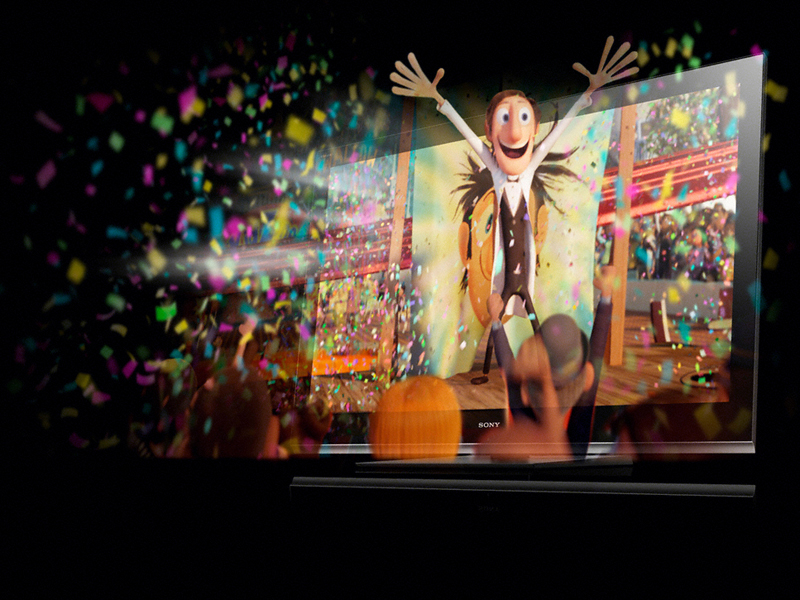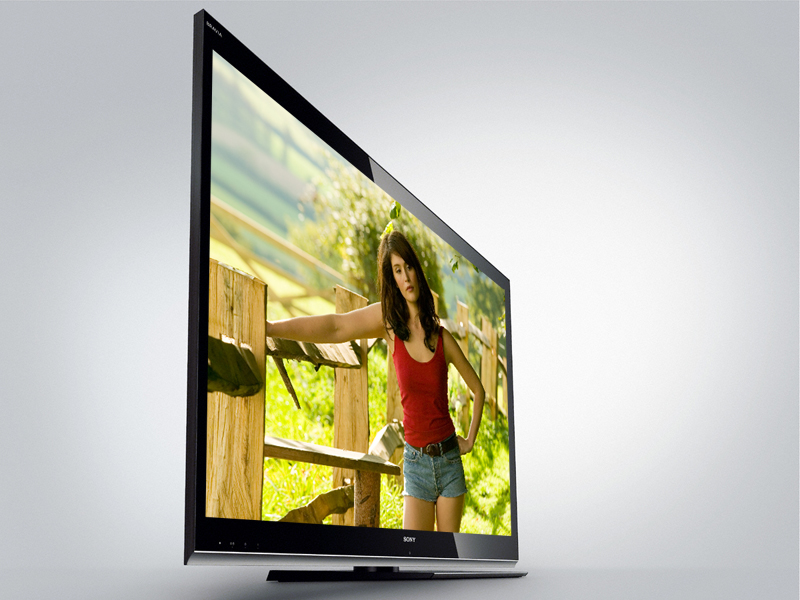Why you can trust TechRadar

Before we talk about what you do get, we should perhaps tell what you don't. A 60in TV is family-sized, but how many families have only two members? Because that's the number of pairs of 3D glasses you get.
At this end of the market, Sony should supply four. Although all modern active 3D TVs work by alternatively-shuttering the left and right eyes so that the relevant one sees only the intended image, these glasses are different enough to ensure incompatibility between different manufacturers. Hopefully this will change in time and a universal standard will be agreed upon.
Right now, though, the market is fixed and so you'll have no option but to buy extra pairs from Sony. At £100 a pop, they're overpriced in our view. More positively, the emitter – which tells the glasses when to shutter – is built into the set as opposed to being an optional 'extra'.
Networked multimedia is fast becoming an essential feature of large-screen TVs (and quite a few smaller sets, too). The 60LX903 can connect to your home network via either Ethernet or Wi-Fi; the latter is recommended for streaming of hi-def video from a home server or PC.
That on-board multimedia player is DLNA-compliant, and in addition to video can deal with audio and photos. Unfortunately, the number of formats supported is disappointing. It can play AVCHD (as used by modern camcorders) and MPEG2 video, but it won't deal with popular codecs like DivX/XviD and x.264 (most commonly associated with the .mkv 'wrapper'). Only JPEG images can be played, while audio files have to be uncompressed (.WAV) or MP3. Anything else is ignored.
The joke is that a vastly-greater range of formats is available if you feed in your multimedia via the USB port. Do this and you'll discover that the 60LX903 is, among other things, DivX-compatible after all.
Sony's 'Bravia Internet Video' gives you access to a host of online content, provided by a significant number of operators including Eurosport, five, Deutsche Welle, FIFA and the ubiquitous YouTube. Online movie rentals, courtesy of LoveFilm, is another possibility; classical-music buffs can also purchase concerts from the Berliner Philharmoniker. An onscreen message tells us that BBC iPlayer is 'coming soon'. Let's hope it is.
The 'demand five' content certainly raises our expectations; it looks quite good, and indeed picture quality isn't much worse than its Freeview broadcast equivalent.
A related Bravia feature is internet widgets. These installable applets provide a selection of features, ranging from weather forecasts and news bulletins to Facebook and Flickr.
With all this in mind, it's easy to overlook the fact that the 60LX903 is also a regular off-air television. In addition to Freeview HD, the 60LX903 also supports the analogue broadcasts (complete with teletext and Nicam stereo) that will, within a couple of years, disappear into the annals of history.
Subtitles, alternative soundtracks, a Freeview EPG and 'red-button' teletext are supported by the digital tuner. There's also a CI slot for pay-TV upgrades. Freeview carries radio programmes, and listeners will benefit from an energy-saving 'audio-only' mode that shuts down the screen.
On the same eco-friendly tip are various energy-saving features, including sensors that adjust picture brightness to compensate for ambient lighting conditions and even turn the set off if no viewers are present.
The innovative 'Intelligent Presence' feature responsible for the latter can even identify specific viewers, recommend programmes based on viewing habits and issue a warning if you're sitting too close to the screen. Other features include picture-in-picture, a VGA/D-Sub input to turn the TV into an enormous computer monitor, various picture/sound presets, virtual-surround and on-off/sleep timers.
Current page: Sony Bravia KDL-60LX903: Features
Prev Page Sony Bravia KDL-60LX903: Overview Next Page Sony Bravia KDL-60LX903: Ease of use